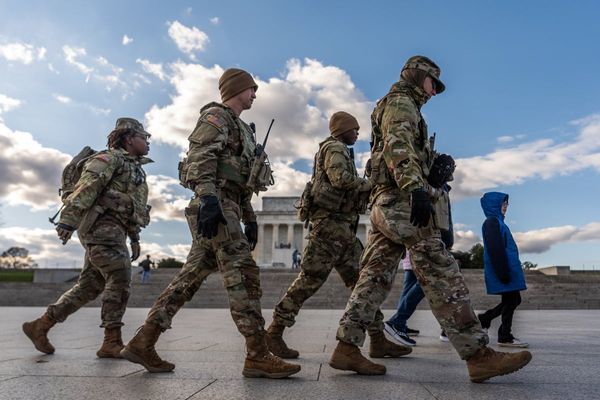
New photos of Australian wildlife in bushfire recovery areas, captured and analysed using artificial intelligence, have given new insights into the journey of vulnerable species back from natural disaster.
Researchers from WWF and Conservation International teamed up with local land managers to collect more than 7m photos from about 1,100 sensor-activated cameras in eight parts of Australia affected by bushfires in recent years.
They captured a wombat mum with her joey in the New South Wales southern ranges, a rare group of echidnas on Kangaroo Island as well as Kangaroo Island dunnarts, dingo pups in Victoria’s East Gippsland, and koalas in the Blue Mountains and south-east Queensland.

The Google AI technology, called Wildlife Insights, was trained on 4m images of more than 150 Australian animals, and tracked their recovery in the years after bushfires.
Dr Emma Spencer, a researcher and coordinator of WWF Australia’s eyes on recovery program, said the system initially identified wombats as pigs and kangaroos as deer.

But now the program can recognise species such as kangaroos and wombats with greater than 90% accuracy.
The cameras have been out in the field in the different locations for between a couple of months and three years.
Spencer said researchers were most excited about the discovery of the dunnarts on Kangaroo Island, where bushfires ravaged up to 90% of their habitat in 2020.
Images of koalas moving around on the ground indicated the animals were still recovering from fires, she said.
“They might be needing to move around more to find new habitat. They’re moving on the ground rather than being up in trees,” she said.

“They can become a lot more vulnerable to predators when they’re moving along the ground.”
The cameras also tracked a variety of invasive species including foxes, feral cats, pigs and cane toads.

Spencer said the technology will make it easier to quickly identify threatened species after fires to help with the response.
She said while the project had pointed to signs of recovery for wildlife after the last bushfire season, the potential for the next was not far away.
“We’ve had three years of heavy rainfall, and in some cases we’ve actually seen big booms of animals because of that. We’ve also seen huge growth of vegetation, which means higher bushfire risk – potentially this summer,” Spencer said.
“What we’re really hoping for is that these results can help to inform future fire events, which we will expect to get a lot more of due to climate change.”









